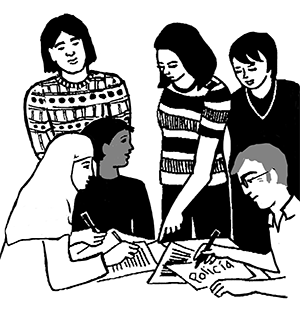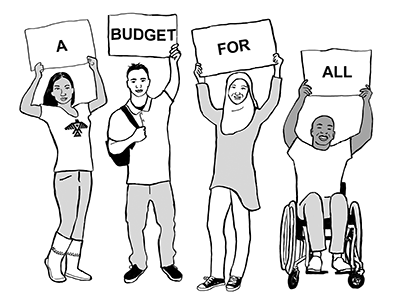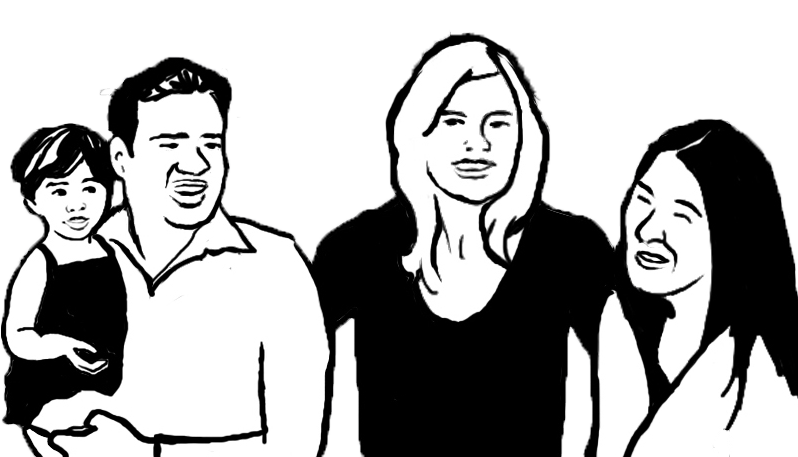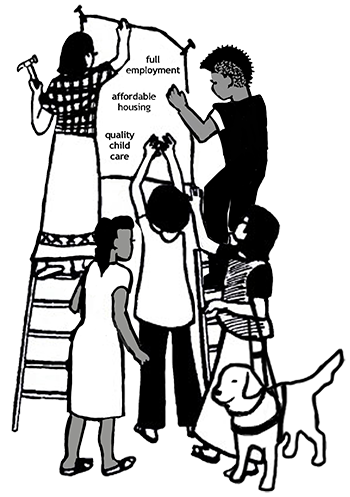Set Your Goals: What Do You ASK City Council to Change?
There are many ways we can communicate and get our message out—from media to Facebook to flyers. Before we start communicating, we need to know WHY we are communicating. What change do we want to happen?
Ask yourself: What will be different as a result of communicating? For example, do you want:
- Ottawa City Council to invite resident input in a decision?
- More funding for a program?
- A low-income transit pass?
- Volunteers for an event?
- Low-income residents to attend a workshop?
- Diverse residents to vote in a municipal, provincial or federal election?
- City Council to pass a motion?
- Staff to invite residents’ input on issues?
Write down what you want to be different. Be clear on the change that you want to happen when you communicate.
Identify Target Audience: Who Needs to Take Action for the Change to Happen?

Simply making people “aware” of an issue does not result in change. You need to identify who can make change happen (residents, community agencies, the Mayor or councillors). Then identify WHAT action people need to take. The actions taken by residents could be different than the actions taken by the Mayor or Councillors.
Examples of actions people can take include:
Residents and community agencies:
- Make a deputation
- Contact their Councillor to discuss the issue
- Attend a public meeting or workshop
- Sign a petition
Mayor or Councillor:
- Make a motion
- Vote on an issue
- Change a policy
- Consult with residents
Remember: Simply making those people “aware” of an issue does not result in change. Ask for the change you want to happen.
Develop Key Messages: What Information Help People Act?

Think about the issue and the change you want. What are the top 3-4 points that people need to know to take action? Keep in mind that the people you want to take action may not know as much about the issue as you know. This includes members of City Council.
If you had just 20 seconds to explain the issue to someone in an elevator, what would you say? Make sure that one of the 3-4 points is the action that you want people to take.
Different people or groups may need different information. Consider if you would talk about this issue differently to a councillor than to an Ottawa resident. Maybe you are asking different people or groups to take different actions. For example, you may ask:
An Ottawa resident to call their city councillor and ask for more funding for a program.
A city councillor to vote for the funding at a meeting.
Write down the 3-4 more important points. These are your key messages. Here are some points to get you started.
- I believe that …
- This matters to me because (your issue)
- I am asking you to (what you want that person to take)
- I will (what you are going to do)
Choose the Best Communication Methods

There are many ways to communicate. Think about WHOM you want to take action. Now ask yourself: How do they want to receive information? For example, it may work best to reach a city councillor through a letter, email, phone call, meeting or Twitter. But, the best way to reach a resident in your community could be through word of mouth, a flyer in their mailbox, poster at the community house, or your community’s Facebook page.
There are many communication methods to consider, including:
- Word of mouth
- Posters
- Flyers
- Media
- Newsletters
